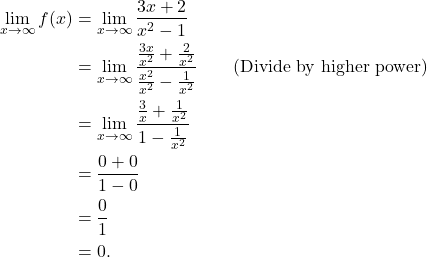Problem 225: Use the limits at infinity to determine the end behavior of
(1) ![]()
Solution: To determine the end behavior of a rational expression, we must take the limit at infinity of the function. That is,
(2) 
Thus ![]() . Likewise,
. Likewise, ![]() . This means that the function (1) has a horizontal asymptote at
. This means that the function (1) has a horizontal asymptote at ![]() . Moreover, the vertical asymptotes are given by the zeros of the denominator.
. Moreover, the vertical asymptotes are given by the zeros of the denominator.
(3) ![]()

Leave a Reply